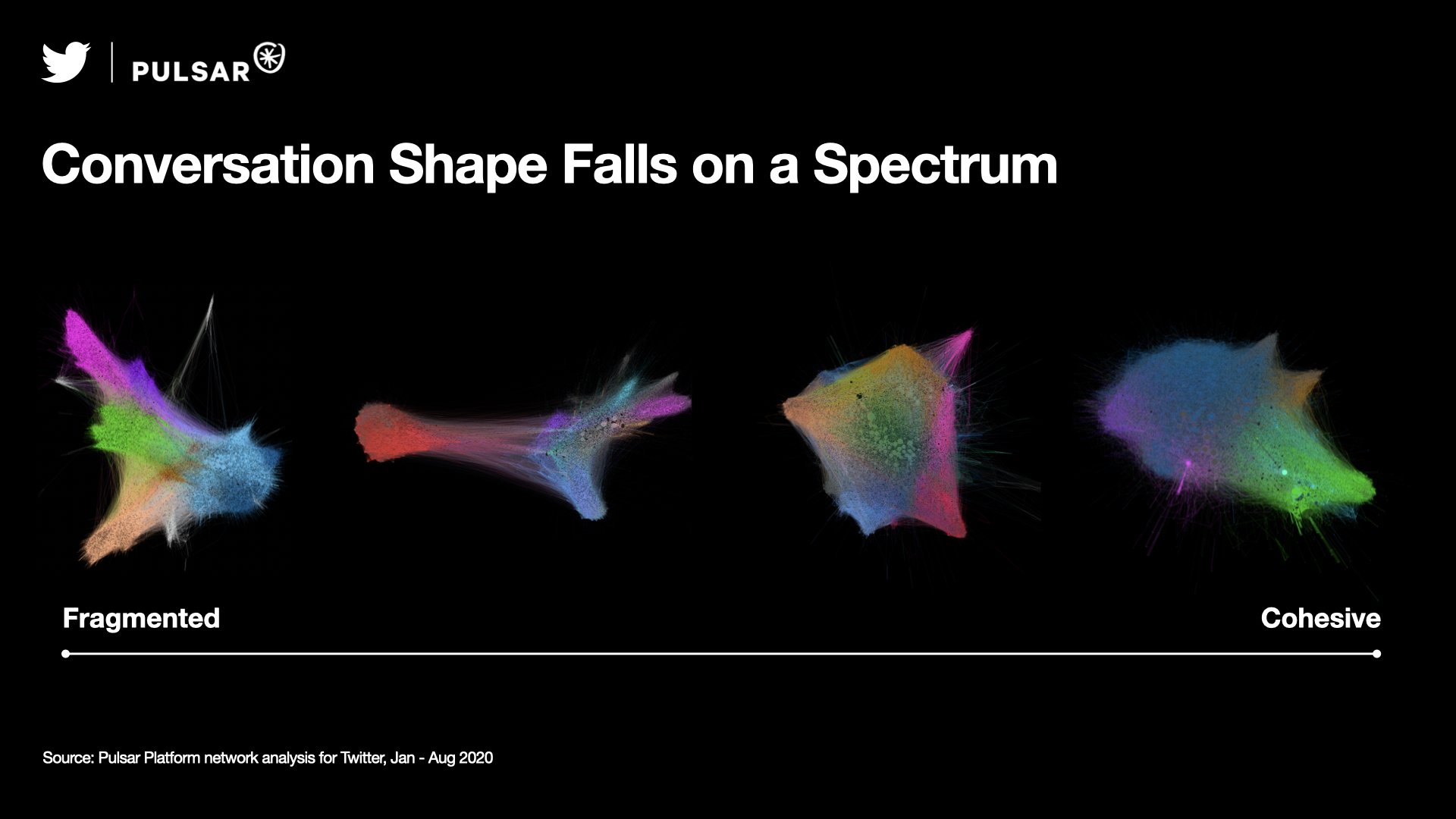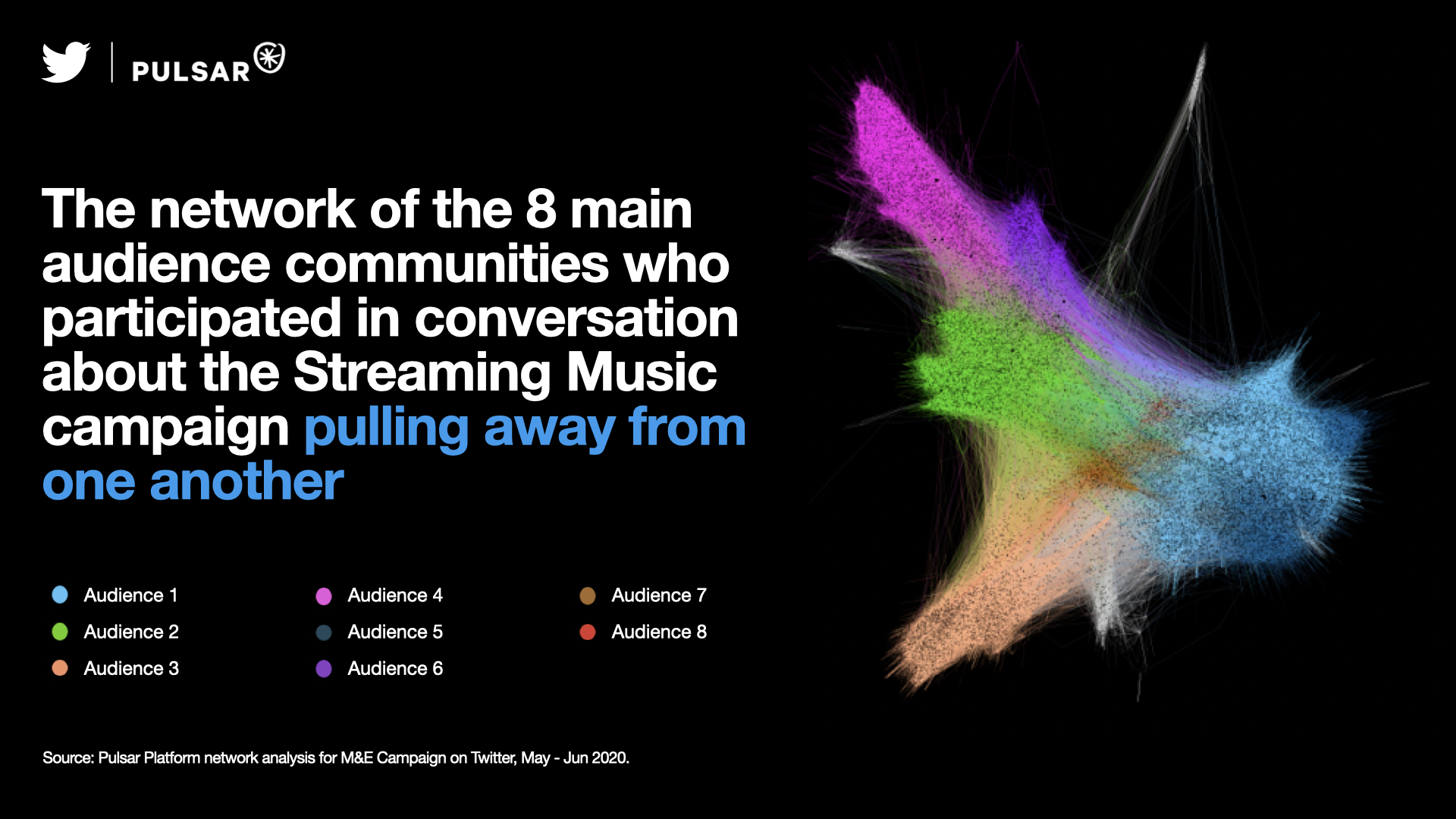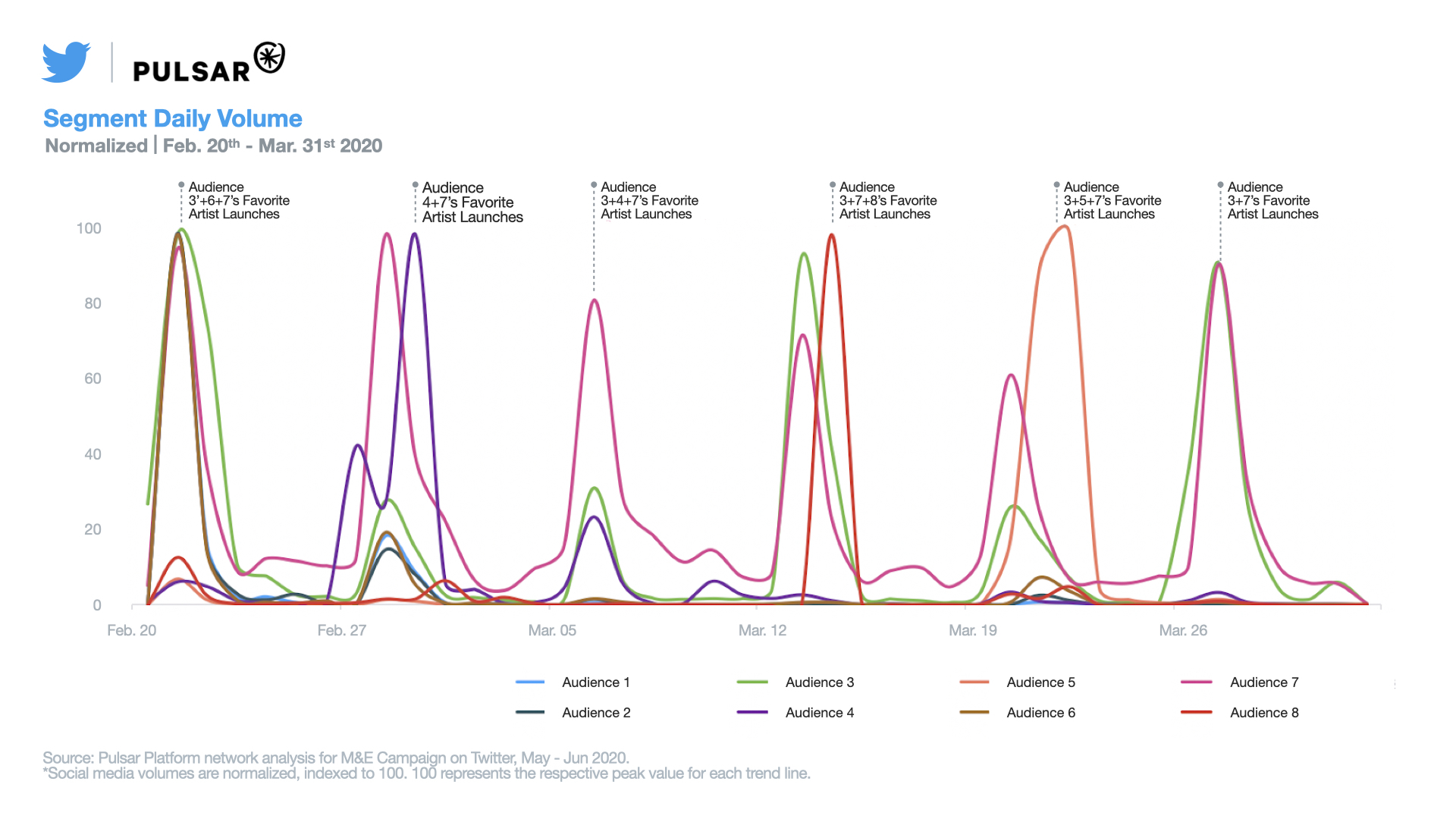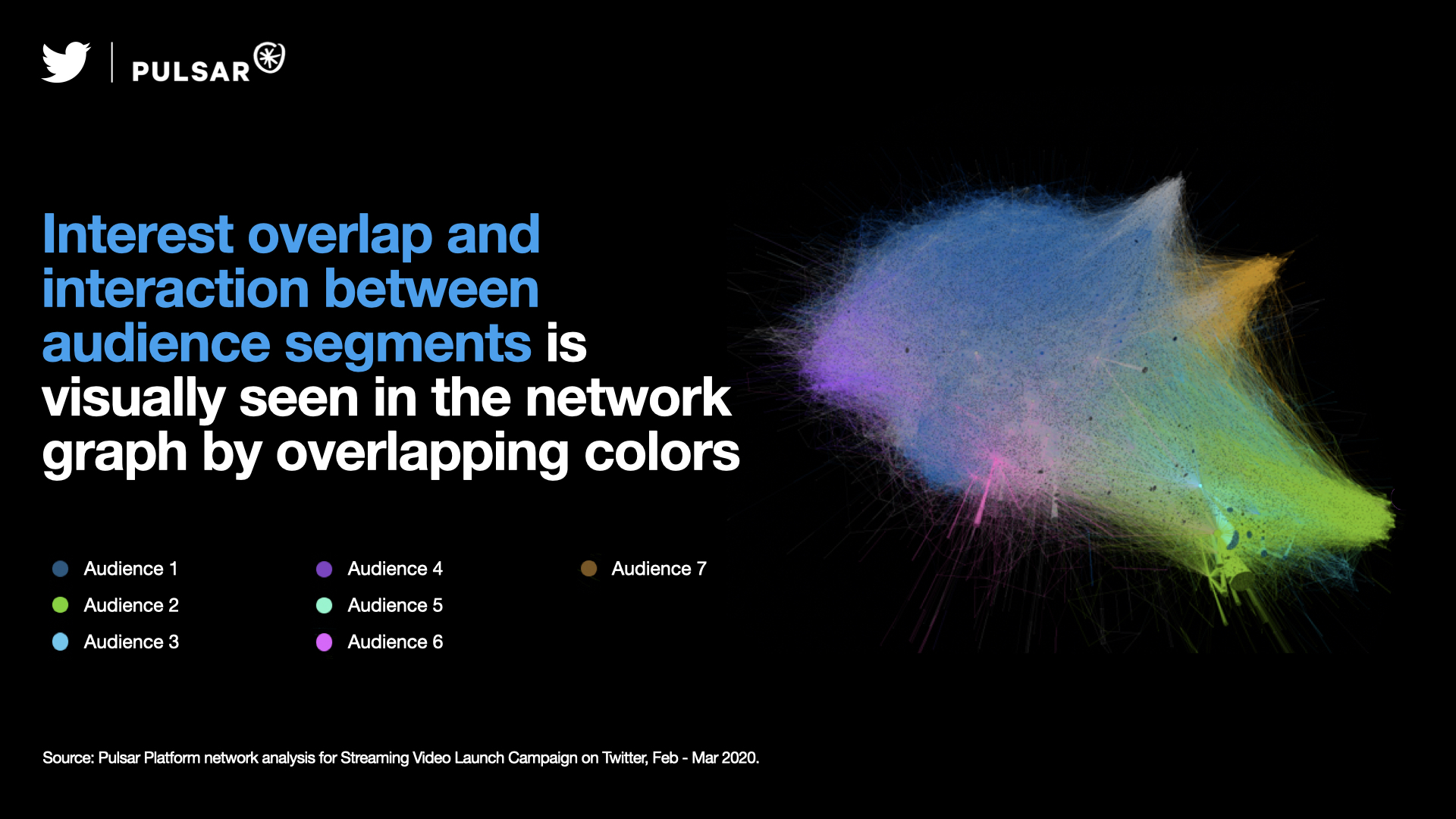Insights
Optimizing the talk on Twitter for brands

Not all conversation is created equal.
We know that through paid ads, brands have the opportunity to amplify conversation about them on Twitter, which can lead to tangible business outcomes. But what can marketers do to optimize their paid strategies and generate the kind of conversation that leads to those positive results for their brand? To dig into this, we teamed up with Pulsar, an audience intelligence firm that uses conversational and behavioral signals from the web to uncover market insights.
Do you know your brand’s conversation shape and substance?
One way brands can think about optimizing their paid strategy is by understanding the shape and substance of conversation about them on Twitter.
Conversation shape is represented by a network graph. It visualizes the audiences contributing to the brand conversation based on who they follow on Twitter. The shape of conversation around a brand campaign falls within a spectrum: on one end, fragmented, when there are fewer direct follower relationships among audience segments, and on the other end, cohesive, when there is more overlap in who users follow.

Conversation substance is what the follower network is Tweeting about: the topics, themes, and sentiment making up relevant brand conversation.
By understanding where a brand’s campaign conversation shape falls on the spectrum — and the makeup of that conversation (substance) — brands can better optimize their media strategy on Twitter.
Still with us? To bring this concept to life, check out these two recent examples.
Reducing conversation fragmentation
In a recent entertainment campaign aimed at driving new music buzz, we saw a fragmented conversation shape. Because promoted content was targeted to fans of specific artists, the audiences within the brand’s reach were heavily concentrated by particular artist affinity. These audiences had minimal follower overlap, and therefore, minimal conversation between them. That translated to a more fragmented conversation shape, in which distinct participating audiences are color-coded and pulling away from each other.

Different audiences only participated in the conversation when their favorite artist was featured, which contributed to asynchronous conversation about the campaign between audiences, visualized in the conversation volume chart below.

In the future, this entertainment brand could elevate the volume of the conversation by activating audiences with overlapping affinities (shape) through content (substance) that’s both relevant and broadly appealing to fans, which would also serve to unite the audience conversation and minimize fragmentation.
Amplifying reach through cohesion
Alternatively, the campaign shape of this brand’s TV launch was much more cohesive, with more audience follower overlap (seen in the less clear delineation of audiences in the shape graph, as well as in the overlapping audience participation in the conversation volume graph).

For this specific campaign, conversation rose and fell on episode release day, because this was a topic of conversation (substance) relevant to all participating audiences.

In the future, this brand can expand the reach of their campaign by targeting audiences with interests similar to those of existing, participating audiences.
Ready to start a conversation?
It’s important to remember that not all conversation is created equal. Marketers should understand the nuances of conversation — from volume to shape and substance — to influence brand conversation and ultimately maximize business outcomes. Following the talk on Twitter is a great place to start. (And you can also learn more about the impact of conversation for brands here.) You can also reach out to your Twitter rep to learn how you can incorporate conversational measurement into your next Twitter campaign.
Sources:
1. Pulsar Platform network analysis for Twitter, Jan - Aug 2020
2. Pulsar Platform network analysis for M&E Campaign on Twitter, May - Jun 2020
3. Pulsar Platform network analysis for M&E Campaign on Twitter, May - Jun 2020. *Social media volumes are normalized, indexed to 100. 100 represents the respective peak value for each trend line.
4. Pulsar Platform network analysis for Streaming Video Launch Campaign on Twitter, Feb - Mar 2020
5. Pulsar Platform network analysis for Streaming Video Launch Campaign on Twitter, Feb - Mar 2020 *Social media volumes are normalized, indexed to 100. 100 represents the respective peak value for each trend line